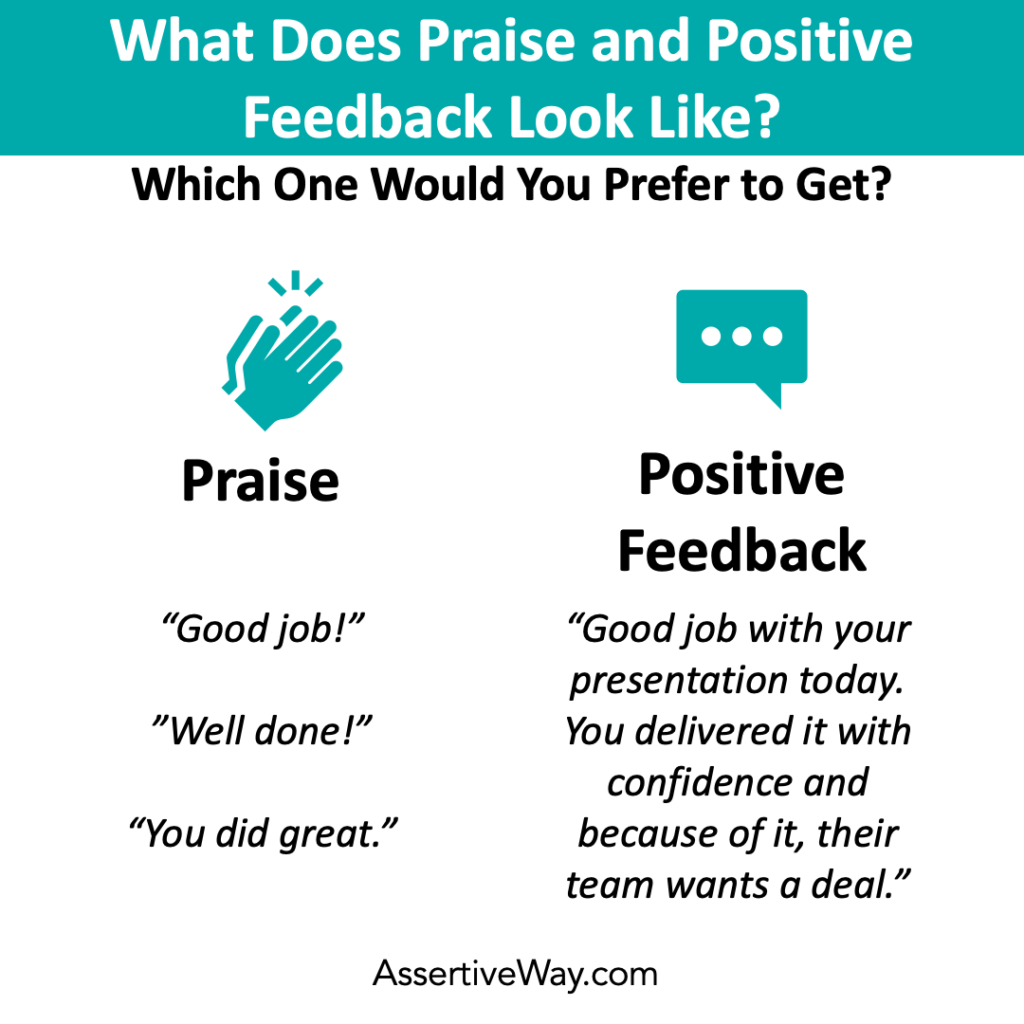No. Positive feedback is better but requires more work.

By Assertive Way
Praise and positive feedback terms are often used interchangeably. However, they are different.
As a manager I found it unnatural to deliver praise such as “well done” or “good job” to my team.
As a manager I found it unnatural to deliver praise such as “well done” or “good job” to my team. I felt praise might not be well taken by team members older than me, especially if they hadn’t chosen to work with me.
Even though I was the manager, I also didn’t feel worthy of giving praise.
Even though I was the manager, I also didn’t feel worthy of giving praise. I often thought “who am I to tell someone that is older and with more experience than me that they did a good job? To express judgement on how they performed”.
Giving specific positive feedback was a lot more natural to me. It didn’t have to express judgement. I could just state facts that didn’t express judgement but provided an implicit compliment such as “your analysis was very thorough” or “your questions were very relevant”.
Both praise and positive feedback are generally positive and are intended to make the other person feel good. Positive feedback is more powerful but requires more work. Praise is shorter and vague. Positive feedback is more thoughtful and specific. Both praise and positive feedback motivate and show appreciation. However positive feedback is better at supporting development.
Here’s the breakdown of praise and positive feedback characteristics.

Praise
- Expression of approval or admiration for someone or something they did
- Usually happens at the moment when the action happens.
- Example: “Good job”, “well done”, “you nailed it”, “you are awesome” and a pat on the back
- Can refer to the person’s action or it can refer to the person directly
- Usually vague and doesn’t explain the “why” behind the praise
- Momentarily boosts the confidence of the person receiving the praise but doesn’t provide a lot of information of what the other person liked
- More likely to be internally rejected by receiver of praise if they don’t understand the reason for the praise
- Expresses positive judgement explicitly
- When done in front of others, can boost the receiver’s morale but may cause envy of others
Positive feedback
- May start with a praise
- Also explains the “why” of the praise
- More specific: It allows the receiver of the feedback to understand exactly what he or she did well and why it’s appreciated
- Example: I may start with “Well done” but then adds “with your presentation today. I was very well structured, very clear, and you delivered it with confidence. And more importantly, you created a lot of engagement from the audience, which was our goal”
- Main drawback is that it requires more thinking. And because of that, sometimes it’s not given at the moment of the action, but after fact, which makes it less impactful
- Doesn’t necessarily express positive judgement explicitly: “I noticed you supported the more junior team members during the project”
- Less likely to cause envy; instead, it shows the others exactly what was admired. This allows others to learn from the successes of others
- Encourages development

In summary, use both praise and positive feedback if you feel comfortable doing so. Give praise with specific feedback to get the most impact. If you feel uncomfortable providing praise, experiment with positive feedback, but try to share it soon after the situation.
“Catch people doing something right” Dr. Derek S Biddle
